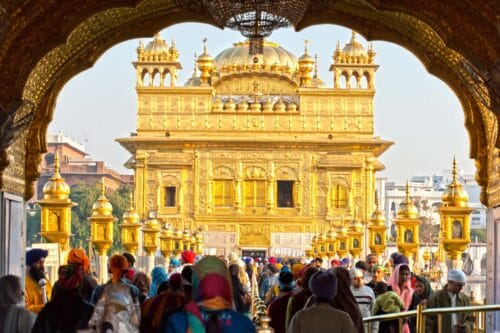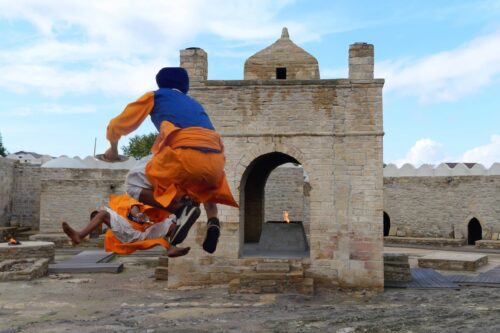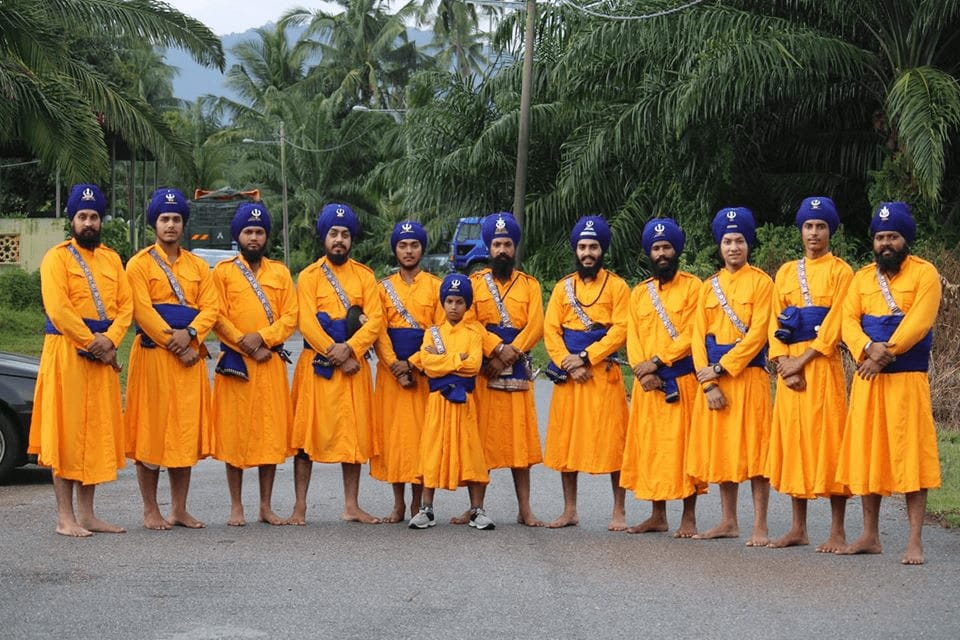Located in the heart of Amritsar, the Golden Temple or Harmandir Sahib is the pilgrimage center, Ath Sath Tirath, for the Sikhs and a world-renowned tourist destination. Also known as Darbar Sahib, the Golden Temple was first constructed in 1577. The building was subsequently demolished and rebuilt several times afterward.
The Golden temple’s reconstruction history closely correlates the struggles of Sikhs and the evolution of Gatka, an ancient sikh martial art form, during frequent invasions of the subcontinent in the past. When you visit the Golden Temple in Amritsar, witnessing Gatka performance is a must.
You must not miss the chance to learn a few moves from some of the most authentic and world-famous Gatkabaaz in the city.

Source: Luciano Mortula
History and Evolution of Gatka, The Ancient Sikh Martial Art
Due to the continued oppression, the 10th Sikh spiritual master, Guru Gobind Singh, founded the Sikh warrior community Khalsa in 1699. Khalsa Sikhs were named Singh, i.e., the lion and were sworn to fight against every injustice. And that’s how Gatka, Sikhs’ heritage martial art, became a religious duty for all Khalsa Sikhs.
As Guru Gobind Singh writes in Zafarnama, “When all other means have failed, it is but lawful to take to the sword.” Gatka Art as a sport evolved after the Indian War of Independence in 1857. The ruling East India Company offered them many relaxations in return for their allegiance against mutineers.
Today Gatka is practiced as two subdivisions; khel, i.e., sport and rasmi, i.e., ritualistic. The primary weapon used for training is Gatka, i.e., the stick and Farri, i.e., the shield.
Some of the other Shastras or weapons used during this practice are Barcha, Chakar, Chakram, Gurj, Katar, and Dahl or Shield.

Watching a Gatka performance is an absolute treat. If you wish to witness rasmi Gatka in all its glory, you need to visit Hola Mohalla celebrations in Anandpur in March. Otherwise, you can visit some of the best Gatka akharas of Amritsar to get a glimpse into this Sikh warrior martial art form.
Train With Guinness Record Holder Shamshir Khalsa Group
Over the past few years, Shamshir Khalsa Gatka Group attempted a few Guinness World Records and to set its mark in the history of Gatka. Recently, Gagandeep Singh successfully managed to set a new record of “60 times Chakkar Bouncing in One Minute.”

You can contact Shamshir Khalsa Group through their Facebook Page or visit them at their Gatka gear shop, Deleke Gatka Bhandar, only a few minutes ride away from the Golden Temple. On the way, you can taste sizzling hot pav bhaji from the local dhaba or visit Jallianwala Bagh Monument, not so far away.
The Gatkabaaz of this group are highly skilled in this ancient sikh martial art. They are an energetic bunch and always happy to show off their skills. Most Gatkabaaz at this club can communicate in English very well, so rest assured; there will be no language barrier.
Visit India’s Most Famous, AGT Stars, Bir Khalsa Gatka Group
Did you watch America’s Got Talent, 2019? Then you must remember the brutal stunts played by Jagdeep Singh and Kanwaljit Singh, who managed to wow the audience right till the quarterfinals. But, now it is your chance to meet them and train with them too.
Less than an hour’s ride away, you can visit the AGT and Indian Idol star Gatkabaaz group of Bir Khalsa Gatka Foundation in Tarn Taran. The group travels from village to village to attract and recruit young children for training. Through Gatka discipline, they hope to save them from falling prey to drugs and crime and lead them to a better future.
Quick moves with a sword or a stick in one hand and shield in the other; watching these players practice is nothing less than a theatrical performance, gripping you in its charisma!
Gatka was a forgotten and dying art, but many efforts have been made to revive it. It has been declared a national sport of India and international exposure is also playing its part in attracting the new generation. At the same time, the diploma course rolled out by the Punjabi University, Patiala is a huge step for preserving this ancient art form.
